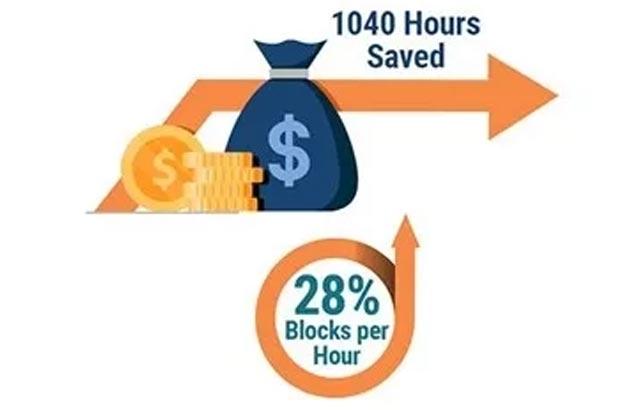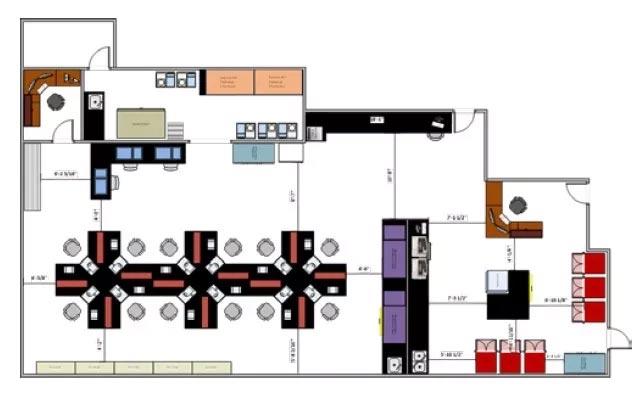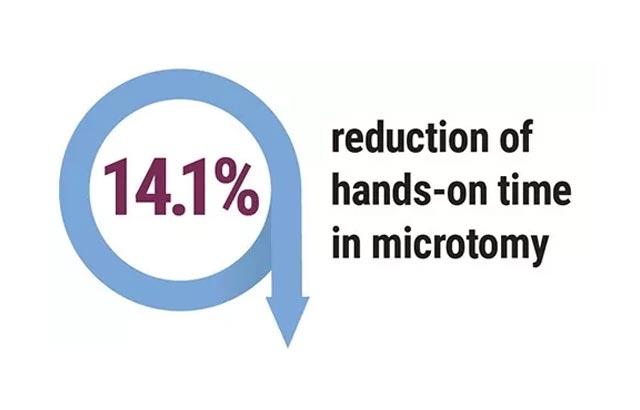
Gastroenterology Laboratory Reduces TAT 42% by Eliminating 25% of Touch Points
A growing gastroenterology group is looking to double the number of clinics within its network by the end of 2019. To meet their goal, they will need to change their current processes to maintain their high standards of quality without negatively impacting their turn-around-time.
The Leica Biosystems Process and Solutions Optimization team partnered with this customer to optimize their processes to enable them to incorporate anticipated volume growth. The first step involved observing and mapping their current processes. By mapping their current processes and including time measures, it became apparent that the staff was experiencing large wait times in two areas – receiving patient samples at the lab and tissue processing. Patient samples were delivered to a lock box by 8:00 PM each night and would sit until 7:00 AM the following morning before being received (an 11- hour wait time). Although grossed cassettes were ready for tissue processing by 6:00 PM each night, they would be placed in a delayed overnight run to start at 2:00 AM (an 8-hour wait time).
Due to the growing volume, the lab was planning to hire additional staff. The Leica Biosystems Process and Solutions Optimization team worked with lab management to extend the current staffing schedule. By extending the hours that the lab is staffed each day, the two identified wait times could be addressed. By moving the time of day that patient samples are received, accessioned, and grossed, the lab reduced turn-around-time (TAT) by 42%. Another benefit of extending staffing into off hours is equipment could be shared, reducing the need for additional capital expenditure.

Another issue that was identified through the process map was the number of touch points within the accessioning through gross dictation processes. The current processes require 4 separate distinct touch points that include 16 process steps. The changes result in only 2 separate and distinct touch points and a 25% reduction to 12 process steps.

Through these two changes, this facility will be in a great position to handle the increased workload, at the same time realizing a reduction in TAT and ultimately benefiting its patients.

Projections and Realized Results are specific to the institution where they were obtained and may not reflect the results achievable at other institutions.
Want to see how the Leica Process and Solutions Optimization team can help improve your lab's workflow?
Related Content
Leica Biosystems 콘텐츠는 Leica Biosystems 웹사이트 이용 약관의 적용을 받으며, 이용 약관은 다음에서 확인할 수 있습니다. 법적고지. 라이카 바이오시스템즈 웨비나, 교육 프레젠테이션 및 관련 자료는 특별 주제 관련 일반 정보를 제공하지만 의료, 규정 또는 법률 상담으로 제공되지 않으며 해석되어서는 안 됩니다. 관점과 의견은 발표자/저자의 개인 관점과 의견이며 라이카 바이오시스템즈, 그 직원 또는 대행사의 관점이나 의견을 나타내거나 반영하지 않습니다. 제3자 자원 또는 콘텐츠에 대한 액세스를 제공하는 콘텐츠에 포함된 모든 링크는 오직 편의를 위해 제공됩니다.
모든 제품 사용에 다양한 제품 및 장치의 제품 정보 가이드, 부속 문서 및 작동 설명서를 참조해야 합니다.
Copyright © 2025 Leica Biosystems division of Leica Microsystems, Inc. and its Leica Biosystems affiliates. All rights reserved. LEICA and the Leica Logo are registered trademarks of Leica Microsystems IR GmbH.



